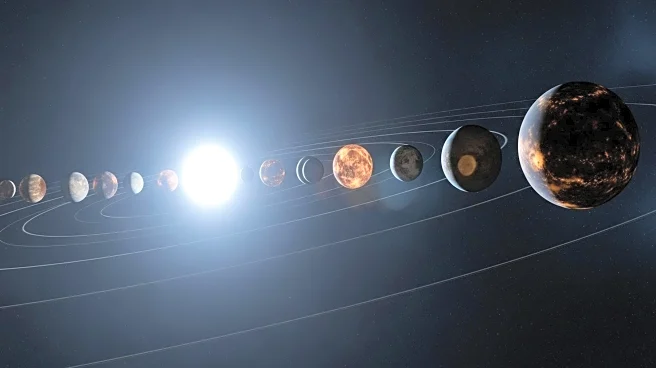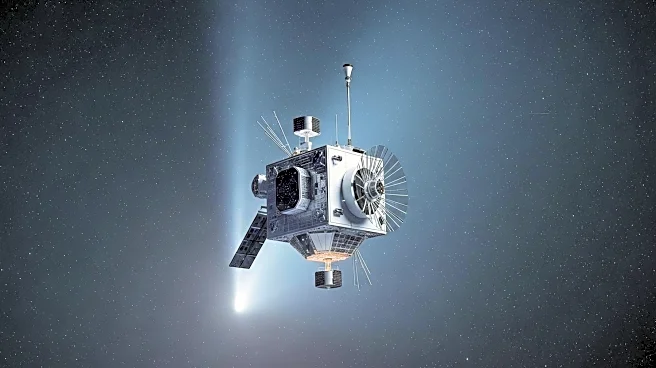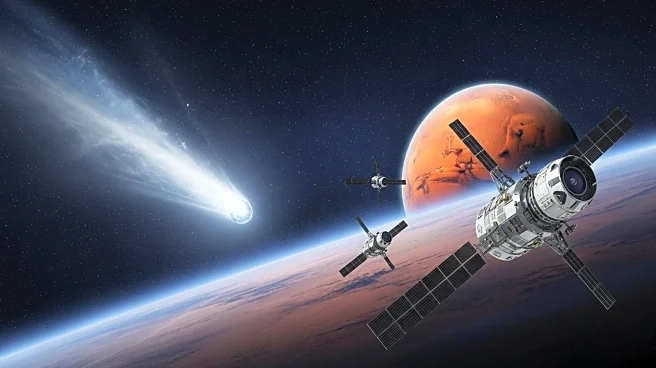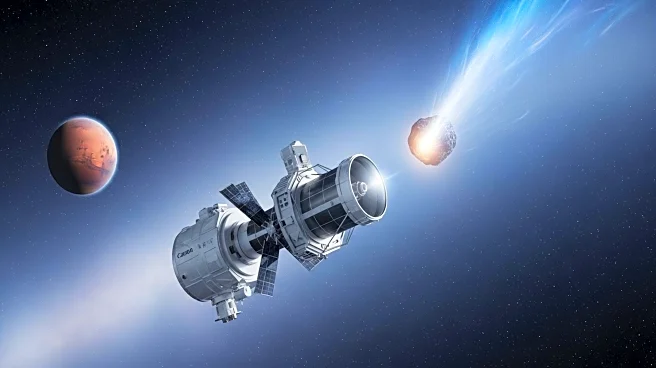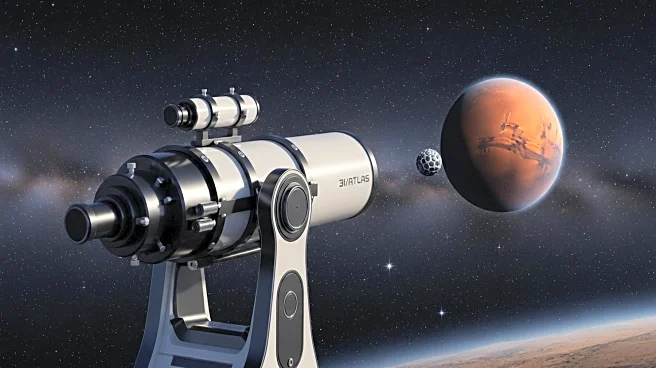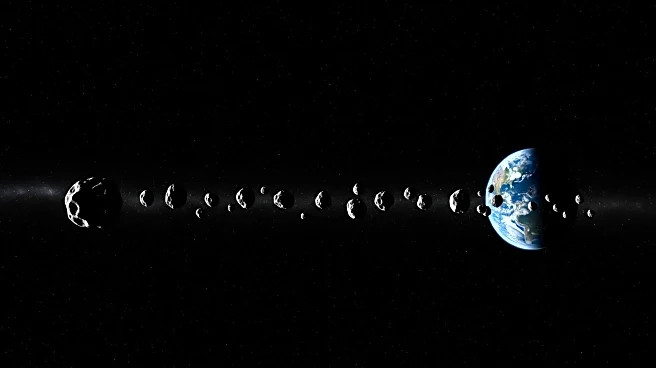What's Happening?
Ceres, the largest body in the main asteroid belt between Mars and Jupiter, is currently visible in the constellation Cetus. It has reached opposition, making it particularly bright and observable with binoculars or small telescopes. Ceres is moving through Cetus' east-west line of Phi stars, providing a clear path for astronomers to track its movement throughout October. The dwarf planet is located north of Diphda, Cetus' beta star, and will pass close to Phi2 on October 10 and hang due south of Phi1 on October 18.
Why It's Important?
The visibility of Ceres offers a unique opportunity for amateur astronomers and enthusiasts to observe a significant celestial body. As the largest object in the asteroid belt, Ceres provides insights into the composition and dynamics of early solar system materials. Observing Ceres can enhance understanding of its surface features and potential for water ice, contributing to broader research on planetary formation and evolution. This event encourages public interest in astronomy and promotes educational activities related to space observation.
What's Next?
Throughout October, astronomers will continue to track Ceres' movement across Cetus, using its proximity to bright stars for precise observation. This period of visibility may lead to new discoveries about Ceres' surface and composition. Researchers might focus on analyzing data collected during this time to refine models of its orbit and physical characteristics. Public and educational programs may be organized to engage communities in observing Ceres and learning about its significance.
Beyond the Headlines
The observation of Ceres highlights the importance of celestial events in fostering public interest in science and astronomy. It underscores the role of amateur astronomers in contributing to scientific knowledge and the potential for collaborative efforts between professional and amateur communities. The event also serves as a reminder of the vastness and complexity of our solar system, encouraging curiosity and exploration.


